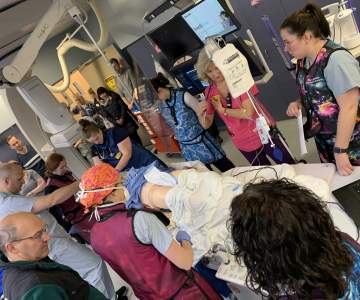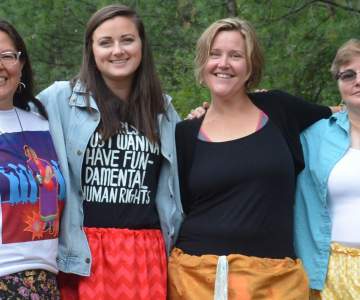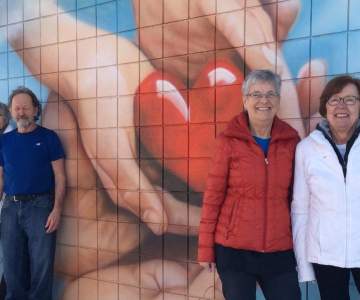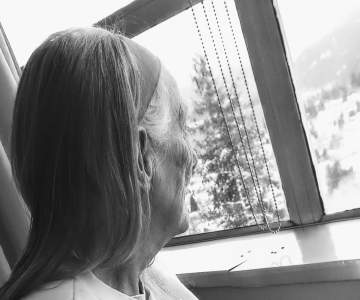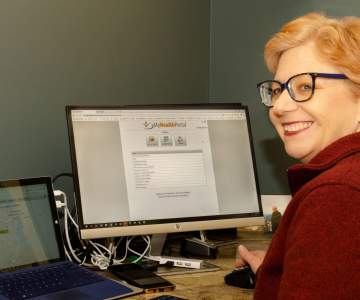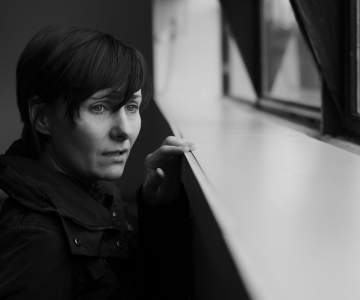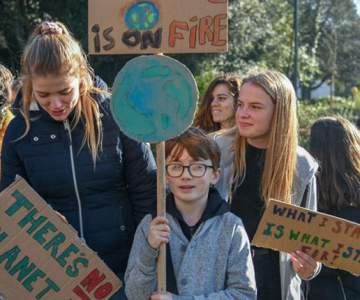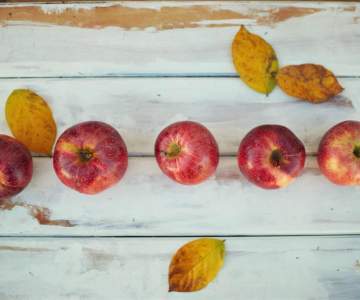Breadcrumb
Explore Stories
Research & Innovation
Ever wonder what goes into caring for
a person who arrives at the emergency department with a serious and
time-sensitive medical condition? The answer is a lot of heart, expertise, and a
great deal of practice.
One way doctors and nurses at Kelowna
General Hospital get the opportunity to practice and build their skills is
through simulation.
Simulation (or SIM if you want to
sound tech-savvy) is an imitation of a situation or process where real life emergency
situations are played out with care-givers responding in the best way they know
how. It is a powerful tool, and one
that’s particularly effective in health care.
“SIM enables us to practice working
together as a team, learn or practice procedures, test new treatment pathways,
and even test new buildings and clinical spaces prior to opening them to the
public so that we can discover any safety concerns and rectify them
beforehand,” says Dr. Jared Baylis, an emergency physician at Kelowna General
Hospital.
A monthly simulation program for the
emergency department has been ongoing at KGH for the last five years. Life-size simulated
patients are used in a variety of real-world scenarios, allowing staff and
physicians to gather valuable experience in a safe setting.
“We recently completed our first multi-phase
simulation at the hospital where we started in one section of the hospital and
finished in another,” says Jared. “It was an opportunity to test our latest
treatment plan for people who have suffered a stroke. As part of the SIM, we
had a patient (even the patient was simulated) start out in the emergency
department, presenting with stroke-like symptoms. We went through the process
of this person moving to the radiology department for a treatment called
endovascular therapy, where the blood clot causing their stroke is removed
using a clot retrieval device.”
It’s these kind of scenarios that
allow care-givers to respond in real time before they can go back and evaluate
the response of the team and identify any issues moving forward.
“Regular simulations help us improve
patient care,” says Jared. “They increase our team communication skills, help
us identify safety concerns, and help us ensure we have the right equipment in
the room, before we need it.”
Community & Culture
When Vanessa, Kris, Sheila, and Beth met as a working group for the first time, something just clicked.
“We found that we worked really well together,” explains Aboriginal health lead Kris Murray. “We had great chemistry, we got a lot done, and there was a lot of laughter.”
Each woman brought her unique lived experience and career journey to their collaboration—a collaboration that led to a bi-weekly podcast, Interior Voices.
“This is heart work—not just hard work,” says Vanessa Mitchell, a member of the Okanagan Nation. She believes in doing this work for the people and adds,
“When I say ‘for the people,’ I am speaking about all Aboriginal people.” She has two distinct roles with Interior Health. Vanessa is the program manager for the Journey to Cultural Safety program and serves as an Aboriginal lead for the St’at’imc and Nlaka’pamux Nations.
Kris Murray also serves as an Aboriginal lead, supporting the Letters of Understanding (LOU) with the Okanagan (Syilx) and Ktunaxa Nations. Additionally, Kris supports the Aboriginal Patient Navigator (APN) program and the links between Primary and Community Care Planning and Aboriginal Health. Kris identifies as Métis and lives and works in Kimberly.
As a regional practice lead, Sheila Lewis brings an Aboriginal mental wellness lens to the conversation. Sheila’s goal is to “pull back the curtain,” and give community members a firsthand look at the work underway within Interior Heath that supports Aboriginal Health and Aboriginal Mental Wellness. Sheila identifies as Plains Cree and Skeetchestn.
Beth Blew supports the Aboriginal Health portfolio through IH communications. She edits each conversation to fit the half hour format. “Paring down the wonderful discussions is often difficult,” she says. “There are so many gems in each episode.” Beth is an American who spent several years living in Indigenous communities—first in Alberta and later in northern B.C. She identifies as a White settler.
In each episode, the team invites others to join their conversations. And while the podcast covers a range of sometimes difficult topics, spending a half hour with Vanessa, Sheila, and Kris sounds like a chat at the kitchen table.
“We were looking for opportunities to communicate with our colleagues in new, accessible ways,” says Sheila.
Each episode provides resources to help listeners navigate the next steps on their own journeys. This year, the team will expand their conversations to include the United Nations Declaration on the Rights of Indigenous Peoples and how implementation will impact health care.
For new listeners, Episode 24: Celebrating Our First Year offers a great introduction to the series. Subscribe to Interior Voices on iTunes or listen online.
Community & Culture
Not all healing happens through health care. Sometimes what’s needed is more about healing the soul than the body.
That’s what happened last year in Grand Forks, a community struggling to overcome the devastation caused by flooding in 2018.
“The idea for the murals started out as part of an effort to bring back visitors to our community,” says Donna Thibeault, local resident.
B.C. artist Archer was commissioned to create airbrushed murals on the walls of several local businesses and landmarks. But as these beautiful images started showing up around the city, the community quickly realized they are gaining much more than a potential tourism opportunity. They are reviving a sense of hope and inspiration.
“After seeing several of these beautiful murals throughout Grand Forks, we decided to have one painted on the outside of our hospital auxiliary thrift shop,” says Willy Triveri, president of the Grand Forks Auxiliary to the Boundary District Hospital, which has donated more than $2.7 million since 2000.
From nostalgic scenes to angel wings, chess boards, and fishing, the murals offer some unexpected colour and Instagram worthy views.
“The theme of hands and heart was chosen because it has meaning for the work we do and the purpose of our auxiliary, which is providing comfort and aid to patients and their families,” says Willie.
Although the community continues to work at regaining what they lost in the flood, they have discovered that art is good medicine.
Health & Wellness
In the film "Cast Away," Tom Hanks plays a business executive who crash-lands on a deserted island. He copes with years of social isolation in part by befriending a volleyball, which he names Wilson. Wilson becomes someone to confide in, to tell jokes to, and to even argue with. When Wilson is swept away in an ocean current, Hanks is devastated at the loss.
Many of us have had fantasies about living alone on a tropical island, far from the chaos and pressure of modern life. But research shows we would fare just as poorly as Tom Hanks in such isolated conditions.
Social isolation is a negative experience that includes painful feelings of not belonging and not feeling connected to others. It happens because there is a difference between the amount and quality of social relationships we want, and those that we actually have.
It’s a growing problem in
Canada and one that’s particularly an issue in many communities in the Interior
Health region.
Some researchers refer to the socially isolated as hidden citizens because it can be difficult to identify those who are experiencing it.
“Although people of any age
can be socially isolated, seniors tend to be more
at risk because many live alone, and, as people age, they may have smaller
social networks and experience mobility issues,” says Shannon Paul-Jost, Gerontology
Clinical Nurse Specialist.
These factors can be compounded for those living in rural or remote communities, where travel to other communities can be challenging and winter months can leave many feeling additionally isolated.
Health risks
Research has found that social isolation is associated with a number of health risks, including:
increased chance of premature deathlower general well-beingdepressiondisability from chronic diseasespoor mental healthreduced quality of lifecaregiver burdenpoor general health
Making improvements
Health and social organizations are working to improve social connections for these hidden citizens.
One such effort is a project led by the non-profit Kalein Centre in Nelson. CLICK! is an intergenerational program that connects high-school students and older adults in the Nelson community. Participants in the program discuss a variety of topics, including social isolation, resiliency and gratitude, and then take photos in their community that capture what they’ve learned.
“CLICK is the sound of a
camera shutter releasing. It’s also that warm feeling you get when people truly
connect. That’s what people are often missing in their lives in an age where
communication technology can often isolate,” says Mike Stolte, Director of
Dialogue and Education at Kalein.
Vicki Huva, a participant in CLICK!, says the program is a step in the right direction of creating a stronger connection between youth and elders in the community.
“What many people don’t realize is that you can become invisible as you age,” says Vicki. “That lack of connection hurts. Not everyone is fortunate enough to have that connection in their lives. People feel better when they feel they belong and these programs help to break down some of those barriers”.
Research & Innovation
Estamont resident Diane Edlund says online access to her personal health information is an important step in creating a partnership between health-care providers and patients.
As a patient partner with the Patient Voices Network, Diane provides a valuable perspective to health organizations on how they can improve the quality of care in B.C.
Diane is one of more than 86,000
people who have signed up for MyHealthPortal, an online tool that provides Interior Health patients with secure
24-hour access to their personal health information from a home computer,
tablet or smartphone.
"Access to my health information makes me feel more in control. I feel like I can take part in my care".“Having the same health-care
information as my doctor allows me to ask informed questions and share in the
decision-making. In the past, only clinicians had access to this type of
information; but I think it’s past time we move towards a system where patients
and care providers are seen as equal, valued and respected partners in care,”
says Diane. “I think my lived experience (health, perspectives and unique needs)
is just as important as the health-care provider’s years of education and
clinical experience. We need both sides for good decision-making.”
"It puts me in the driver’s seat of my health care". “Digital tools like MyHealthPortal allow me to
share important information with others in my circle of care. It’s particularly
helpful when moving from hospital back into the community so I can share results and reports and make
sure information doesn’t slip through the cracks.”
For more information and to
sign up, visit MyHealthPortal.
Health & Wellness
Walking around your neighborhood or local shops at this time of year, there is a constant reminder that the holidays are a time of happiness and celebration with family and friends.
But if you are grieving the death of a loved one or have experienced another type of loss, the holidays can often magnify that sense of grief.
If the idea of getting to the New Year feels like a struggle, here are some ideas to help.
Be honest with yourself about what you can handle. You might welcome the distraction of holiday decorating and preparation. Or you might not feel up to doing everything you usually do. Give yourself some grace. Social events may be more draining than usual. It's okay not to accept every invitation; don't let others make you feel obligated. If you're attending an event, try to take your own transportation so you can leave when you're ready.
Keep some old traditions, and make new ones, too. Continuing a tradition you shared with a loved one who's gone can make you feel closer, even if it is bittersweet. There can also be comfort in creating a new tradition to honour their memory – lighting a candle, creating a memory box or quilt, putting out a new special ornament, or engaging in a meal or activity that your loved one enjoyed while sharing memories, for example.
Remember that people grieve differently. It's not uncommon for people to have a sense of guilt if they catch themselves feeling happiness or joy while they're grieving – or resenting others for doing so. But grief has no rules or timetable.
Be kind to yourself. With grief, you may be fine in the morning, but by the afternoon or the evening you may feel differently – and that's normal. Don't worry if you can't or don't want to do as much you usually do. The holidays can be draining in the best of times, and grief is exhausting. Give yourself a break.
Connect with others who might understand. There can be comfort in talking with others who understand what you are going through and can relate to how challenging the holidays can be.
There are also some excellent resources online that can help. Visit virtualhospice.ca for resources and information.
The care team at Hospice House Kelowna provides people with a place to live, find comfort, and connect. Hospice House is a part of Interior Health’s Hospice Palliative Care Program.
Community & Culture
In the aftermath of the 2017 terrorist attack in Manchester, United Kingdom, something unexpected happened. The community gathered to honour the dead with a spontaneous rendition of Don’t Look Back in Anger by the local band Oasis.
When grief renders words inadequate, music can sometimes provide an outlet for the emotions associated with death and dying.
Suzanne Miller has been singing for those near death for the last three years. She is part of a threshold choir in Nelson, B.C.
The threshold choir provides comfort to those at the thresholds of living and dying. With gentle voices and songs, the singers provide a calm and kind presence at the bedside of those who are near death. Over the years, Suzanne has found this singing to be soothing and reassuring to clients, family, and caregivers alike.
"People are drawn to the threshold choir for many reasons. Some experience 'the shiver' when hearing about the choir’s purpose or their music. Others join after caring for a dying person and realizing how humming, singing, or playing music is part of how we soothe each other," says Suzanne.
The bedside singers come from all walks of life.
“A few of us are musicians; most are not,” says Suzanne. "We learn to carry our parts and blend our voices, some by reading music and others learning solely by ear. Some have a religious or spiritual background, while others are staunch atheists. Many have focused on home-based work and volunteering and have a connection to hospice work.
"As threshold choir singers, the most important things we share are a repertoire of beautiful, meaningful, and soothing songs and a desire to provide comfort and peace at a significant and challenging stage of life.”
Health & Wellness
The global climate is changing. On average, the temperature of the earth is rising. This is causing more extreme weather events such as the droughts, fires and floods that many of our communities have experienced this year. These changes affect natural and human environments (air quality, clean water and food sources) and also can have negative effects on our health.
The impacts on health from climate change are varied and will depend on where you live. They can include respiratory diseases, heart disease, heat-related illnesses, mental illness, malnutrition, infections and other illnesses. There are a number of things you can do to protect your health from issues related to climate change:
Air quality: Check the Air Quality Health Index for your area. If it is poor, limit your outdoor activity and follow the other guidelines provided.
Sun, heat and extreme temperatures: Stay covered, use sunscreen, stay hydrated, and watch for signs of heat-related illness during extreme heat events. Never leave children or pets unattended in the car.
Food and water safety: Be aware of food recalls and boil water advisories in your area. This is important not just for drinking, but also food preparation, teeth brushing, etc.
Insects and disease: Learn more about disease-carrying insect threats in your area (e.g. Lyme disease, West Nile virus) and take precautions.
Fires, floods and other emergencies: In preparation for environmental emergencies, put together an emergency kit and evacuation plan. See Government of Canada’s Get Prepared website for tips.
Are you ready to be more proactive? You can limit the negative effects from climate change by reducing your carbon footprint or personal and workplace greenhouse gas (GHG) emissions. Here are a few things that can make a big difference:
Consider “greening" your commute: try walking, cycling, carpooling or taking transit – it doesn’t have to be every day, but using alternate transportation even once in a while can make a difference.
Reduce your energy use: switch off your computer, lights and other electronics when not in use.
Waste less – want less: reduce what you use, re-use items and re-cycle.
Go local: whenever possible buy local foods and local goods.
When you reduce your personal GHG emissions you’ll be helping to improve air and water quality in the short term. Over the long term, you’ll be helping to secure our water and food resources, reduce weather and temperature extremes, and help curb the spread of disease carrying insects. All of which will improve our health.
Health & Wellness
I’m already planning what I want to cook for the December holidays. I’m thinking of a dinner that’s a little less traditional this year and I'm looking at lemon risotto and stuffed squash recipes. I get excited about the holidays every year. For some reason cooking for celebrations is a completely different experience for me than the Monday to Friday grind of just getting a meal on the table.
As I was flipping through my cookbooks, my mind was drifting to all of the things that I take for granted and that I should give thanks for; things like being healthy and being able to afford the groceries for this meal.
Times are tough right now. More people are using food banks each year. I've been thinking about how difficult it must be to make a special meal when you're struggling to make ends meet.
People who don't have enough money to buy high-quality food are sometimes called "food insecure." Research shows that having enough nutritious food to eat is important to your health. Those who don't are more at risk of many health conditions including diabetes, heart disease, hypertension, back problems, and poor mental health. Kids with food insecurity have a higher risk of childhood mental health problems, asthma, and depression.
But why? Shouldn’t it be those folks planning rich holiday feasts who have a greater chance of heart disease? It turns out that it’s not that simple.
Not surprisingly, people who are able to buy healthy food are also more likely to have well-paid work, live in good neighbourhoods and afford a fitness pass. Living on a low income, having an unhealthy work environment, and paying a lot for housing, childcare and transportation are stresses that contribute to poor health. On top of all that, unhealthy, highly processed food is usually cheap, while fresh vegetables and fruit can be expensive.
It’s a problem with no easy fix. The good news is that there are many community organizations and local governments that are working to tackle these complicated problems, and Interior Health’s Healthy Communities Program is working alongside many of them.
-
Load More
Showing 783 of 790
Sign up for email updates
Receive news, alerts, public service announcements and articles right to your inbox.


